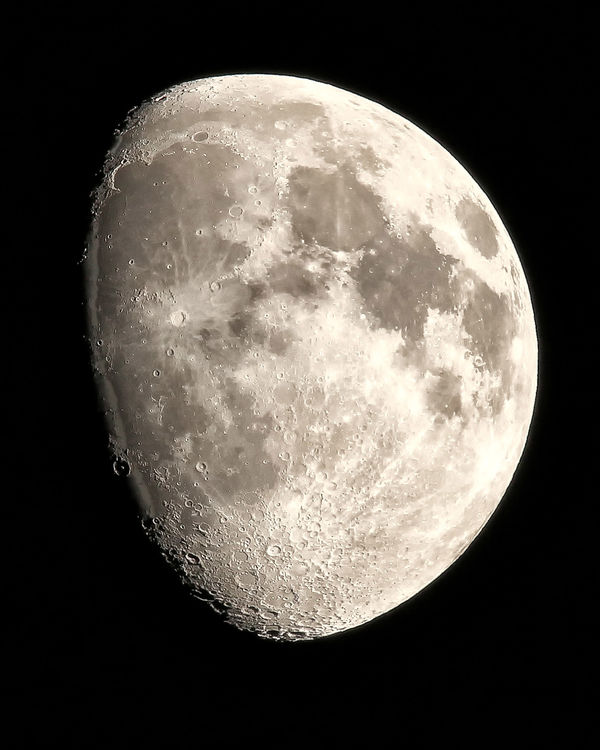Photographing the moon
Jun 28, 2018 07:48:14 #
The depth of field of any lens even at the smallest aperture will not let you get both the cloud and moon in focus. So you have to take many pictures and try combining them in post.
The latest Peter Lik image. Can this photo possibly be real debate. No it is a composite.
https://youtu.be/c2yaO__wmA4
https://youtu.be/OTn9Ymknfo0
The latest Peter Lik image. Can this photo possibly be real debate. No it is a composite.
https://youtu.be/c2yaO__wmA4
https://youtu.be/OTn9Ymknfo0
Jun 28, 2018 08:35:41 #
billnikon
Loc: Pennsylvania/Ohio/Florida/Maui/Oregon/Vermont
dyximan wrote:
I understand photographing the moon is similar to ... (show quote)
A starting moon exposure would be 1/ISO at f16. So, what that means is if your ISO is 400 then your BASE moon exposure would be 1/400 sec. at f16. If your ISO is 200 then your base exposure would be 1/200 at f16, etc. etc. etc.
Again, this is a starting point, the nice thing with digital is after the first base exposure I mentioned you can look at your moon in the back screen of your camera and see if you need a little more exposure or a little less.
Good luck and keep on shooting until the end.
Jun 28, 2018 09:41:15 #
dyximan wrote:
I understand photographing the moon is similar to ... (show quote)
There was a recent thread on this subject:
http://www.uglyhedgehog.com/t-520638-1.html
All shots were taken with a Nikon D750. The lens and shooting parameters were:
1) Nikon 24-120 f/4 0.5 sec ISO 100 (water reflection)
2) Nikon 24-120 f/11 1/125 sec ISO 125 (Moon portion for composite)
3) Tamron 15-30 f/2.8 1/13 sec ISO 1250
4) Nikon 28-300 f/5.6 1.6 sec ISO 640
I have a set of shots I am working on with the Moon near Jupiter. If there were no clouds, it would be a simple task to combine the two best exposures for the final composite. However, there were clouds and I haven't been able to drop a properly exposed moon behind the clouds, I don't quite have the skill set yet in Photoshop to do this.
Exposed for Water Reflection
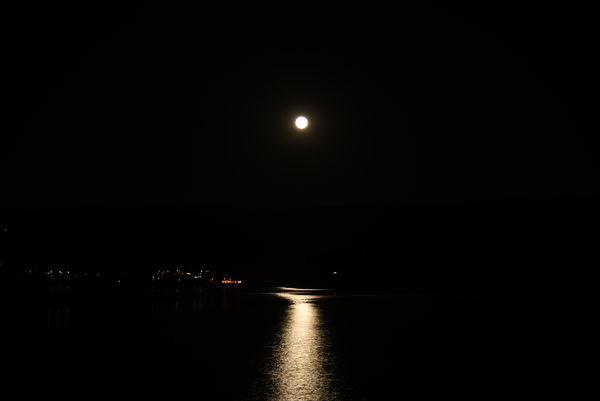
(Download)
Composite exposure
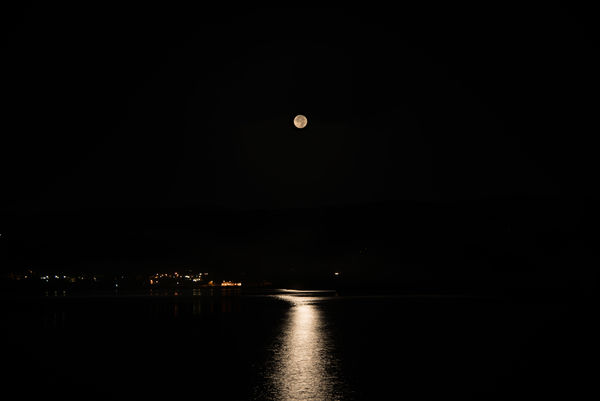
(Download)
Moon Behind Clids
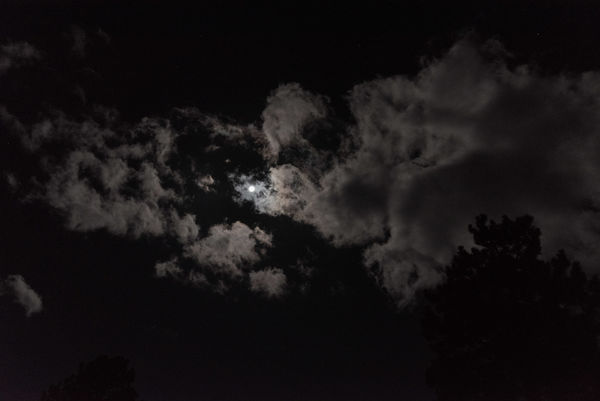
(Download)
Moon Venus and Mercury in Clouds
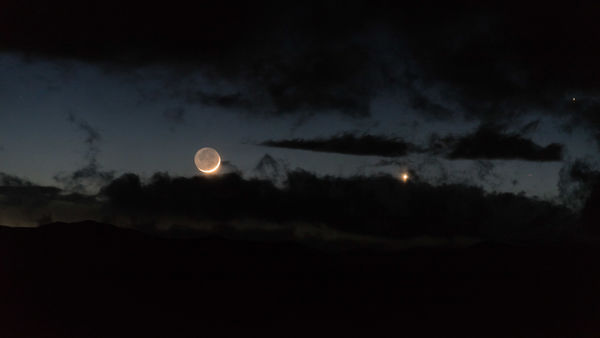
(Download)
Jun 28, 2018 10:03:22 #
This is a composite moon shot of five individual shots. I used D750, Tamron 150 - 600, f/13, shutter speed =1/1250, ISO=1800, hand held. Combined in Photomatix. Would have been better to use a tripod, but this is from my driveway and I only get a clear shot of the moon for a half hour or so because of the trees. I didn't have time to look for the tripod.
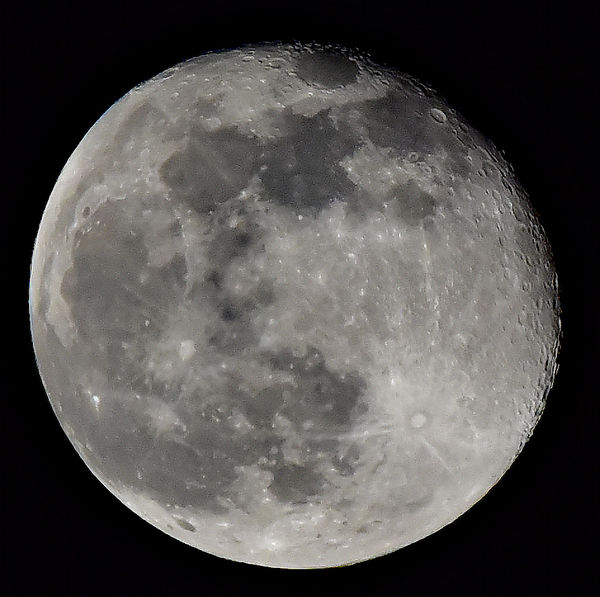
Jun 28, 2018 10:29:37 #
kenievans
Loc: Dallas
hj wrote:
Sorry, but I think most of us shooting the moon are after the nooks and crannies. Anyone can get a distant round sphere. Not meaning to disrespect anyone.
No disrespect taken. I wish I could have gotten those nooks and crannies but a cheap equipment and lack of experience doesn't necessarily make for outstanding photos. I was pretty proud of my first effort though. My point being that with dyximan's better equipment and the correct settings he should be able to get what he is looking for. In the mean time I keep leaning and trying to make the best of what I have.

Jun 28, 2018 12:09:13 #
Another lesson I learnt day before on June 27th when I tried to capture the moon rise on the horizon (sea), the moon was not visible as the sun had not set. May be because summers are not the best time to capture moon rises in Cape Cod. Any advise?
Jun 28, 2018 14:43:38 #
A full moon is a rather boring subject. Look for one that is 50% or less - on the web you can easily find out when this is going to be. One time when the full moon can make an interesting subject is when it is just rising above the horizon, especially with some foreground feature. Or when you are using it as a source of light behind clouds.
Jun 28, 2018 14:50:33 #
hj
Loc: Florida
I have to agree with you. I have probably a hundred shots of the monn over the last couple of years and the full moon is the most boring. It's the partial moon shots that reveal so much more of the craters etc.
Straight Shooter wrote:
A full moon is a rather boring subject. Look for one that is 50% or less - on the web you can easily find out when this is going to be. One time when the full moon can make an interesting subject is when it is just rising above the horizon, especially with some foreground feature. Or when you are using it as a source of light behind clouds.
Jun 28, 2018 15:38:55 #
amfoto1
Loc: San Jose, Calif. USA
billnikon wrote:
A starting moon exposure would be 1/ISO at f16. So... (show quote)
Not quite right... You are using the "Sunny 16" rule, which is broad daylight.
Instead use the "Lunar 8" rule... one stop more exposure because the moon is reflected sunlight and about 1 stop's worth of light is observed or due to the added distance.
In fact, the moon is a lot brighter than people realize... often causing severe OVER exposure.
A trick that can help is shooting at dusk, before the sky goes completely black. It also may help to photograph the moon very low on the horizon, because there's a magnifying effect when viewing it through more atmosphere. This also may reduce sharpness and distinctiveness of details though, or even add some distortion. You'll have to weigh the pluses and minuses for your particular purposes.
When the moon is full, there is the least detail because sunlight is most directly falling upon it. At the other extreme, a crescent moon is strongly side lit to make for stronger surface details, thanks to shadows.
There are phone apps and online resources with moonrise, moonset times, as well as the phases. You're at the mercy of the weather and atmospheric conditions any time you are trying to get a shot.
I agree with some other responses, sometimes multiple images are the only way to achieve an image. The following is a composite where the moon was shot with a 500mm lens fitted with a 2X teleconverter and on an APS-C DSLR (an older, 6MP model), while the wolf was photographed with a 35mm film camera, 105mm lens and flash.
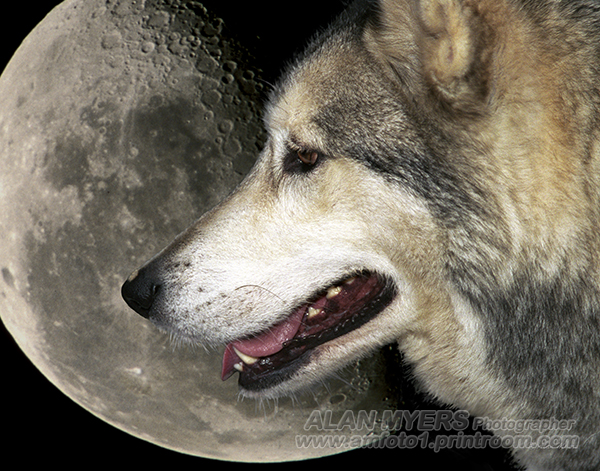
The above isn't the sharpest shot of the moon, but that wasn't necessary or even what I wanted for this composite. I always liked the portrait of the wolf (she was a 120 lb. sweetheart!), but just felt it needed something more. It was several years later when I got the idea of combining it with a moonshot in Photoshop and made some images for the purpose. Obviously, this would be an impossible image to make in a single shot.
Jun 28, 2018 17:31:15 #
pauldh
Loc: Melbourne, Australia
Cropped from a shot taken at 1/360, f6.3 ISO 100 Spot Focus. I used PS to reduce noise added a bit of sharpening and +1EV. Lens is a Canon 300mm f4 IS USM on my 5D Mk IV. Taken at 8:39 am in Melbourne, Australia. This was taken hand held leaning up against my garage wall! I took several shots and this was the best.
Hope this helps!
Hope this helps!
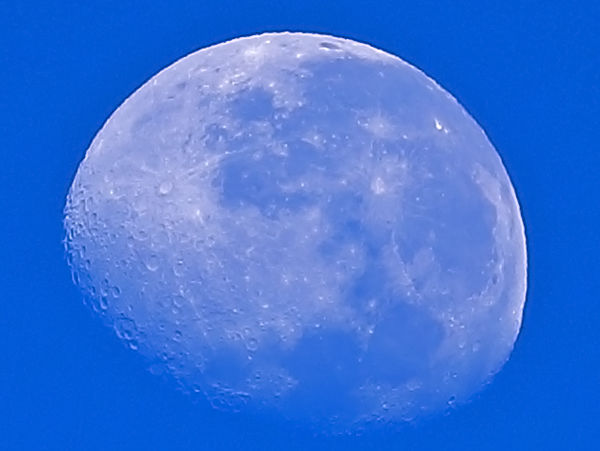
Jun 28, 2018 18:21:39 #
It's really simple. For a full moon. Camera on manual mode, ISO 200. Shutter speed 200. F/10. Use a tripod. That's it.
Jun 28, 2018 18:45:07 #
Hey neighbor
Bruce here in Grand Prairie, a local of the area.
Welcome to the forum.
And yes we had a nice clear shot of the moon last night despite the cite lights.
Bruce here in Grand Prairie, a local of the area.
Welcome to the forum.
And yes we had a nice clear shot of the moon last night despite the cite lights.
Jun 28, 2018 18:55:09 #
A way to reduce the high contrast between the clouds and the moon is to shoot while it is still twilight or even daytime.
Jun 28, 2018 20:02:03 #
Straight Shooter wrote:
A full moon is a rather boring subject. Look for one that is 50% or less - on the web you can easily find out when this is going to be. One time when the full moon can make an interesting subject is when it is just rising above the horizon, especially with some foreground feature. Or when you are using it as a source of light behind clouds.
I agree. The moon pics I have that are the most interesting are not full moons. I like nooks and crannies.
Jun 28, 2018 20:11:28 #
tropics68 wrote:
I agree. The moon pics I have that are the most interesting are not full moons. I like nooks and crannies.
Agree, full moons are not as inserting as the partial moons. Very nice shot, what were your shooting parameter?
If you want to reply, then register here. Registration is free and your account is created instantly, so you can post right away.






